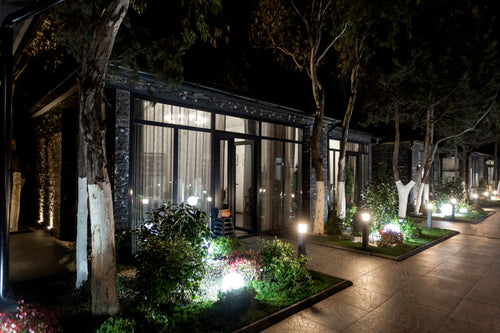Illuminate Your World with LED Phantom: Powering Smarter, Brighter Spaces
In a time when energy efficiency, long life, and smart control are no longer luxuries but business essentials, LED Phantom stands as a reliable name in lighting solutions. At its core, LED Phantom blends cutting-edge LED hardware with sophisticated control systems to bring you lighting that not only illuminates spaces but also optimizes performance, reduces cost, and supports sustainable operations. Whether you are exploring exterior street lighting, indoor retrofits, emergency luminaires, or networked lighting systems, LED Phantom's product range is designed to elevate spaces with intelligence and efficiency.
In this deep dive, we’ll explore how phantom lights fit into LED Phantom’s portfolio, what the term led phantom glowing really means in practical setups, and how you can make strategic decisions when selecting and deploying lighting systems from LED Phantom. This is more than a product overview — it’s a guide to leveraging lighting as a technical asset for your facility, campus, or commercial venture.
LED Phantom: Brand Overview & Core Philosophy
LED Phantom is known as a distributor and solutions provider specializing in high-quality LED lighting and controls. Their website showcases a broad range of indoor, outdoor, retrofit, and control products all built around the principle of energy efficiency, performance, and integration.
One of their distinguishing strengths is a full-stack approach: LED hardware, control systems (stand-alone and networked), pole mounting and structures, and emergency lighting / exit systems. This allows customers to integrate an entire lighting ecosystem under a single technical umbrella rather than piecing together disparate components.
LED Phantom’s target markets include commercial buildings, warehouses, retail, municipalities, outdoor lighting, and retrofit programs. Their brand messaging emphasizes not only “lighting” but “energy efficiency products” — signifying a broader mission toward sustainable, smart infrastructure.
Because of this integrated positioning, when you explore their catalog or solutions, you’ll often come across the term phantom lights as a shorthand for the LED lighting fixtures they distribute, often blending performance, modularity, and control readiness.
Phantom Lights: What Are They & Why They Matter
The phrase phantom lights in the context of LED Phantom refers broadly to the LED fixtures that the company offers — indoor and outdoor — that are designed to deliver high lumen output, long life, and compatibility with controls. These aren’t ghostly or mystical lights — though the term may evoke intrigue — but robust engineering.
Phantom lights span categories such as:
-
Outdoor lighting (area lights, flood, wall packs, canopy lights)
-
Indoor lighting (troffers, high bays, retrofit kits, panel lights)
-
Emergency / exit lighting and backup fixtures
-
Pole mounts, brackets, and supporting structure
-
Control components (network systems, dimmers, sensor modules)
The idea is that these fixtures and systems “disappear” operationally — they remain out of mind, require minimal maintenance, and deliver consistent illumination behind the scenes. The term gives a sense of reliability, unobtrusiveness, and high performance.
If you're comparing lighting options, understanding how phantom lights differ in design quality, driver choice, thermal management, control compatibility, and integration is key. For example, LED Phantom tends to focus on matching hardware and control infrastructure to support energy savings, ease of replacement, and system cohesion.
Demystifying LED Phantom Glowing
One question or phrase you might come across is led phantom glowing — a phenomenon where LED fixtures emit a faint glow even when switched off. This residual glow can surprise users and lead to concerns about safety or wiring faults. But in many cases, it’s a predictable behavior due to how modern LED circuits are designed.
Why Does LED Phantom Glowing Happen?
-
Leakage Current / Residual Voltage
Even when a circuit is switched “off,” small leakage currents can flow — from line coupling, dimmer electronics, or alternate wiring paths. This current can be sufficient to weakly activate LED diodes, causing a low-level glow. -
Incompatible Dimmers or Switches
Old dimmer circuits designed for incandescent loads may permit minimal current flow at off positions. With LED drivers being highly sensitive, that tiny current is enough to produce a glow. An LED driver expects a cutoff; if the switch doesn’t fully cut current, faint emission can occur. -
Capacitive or Inductive Coupling
If wiring runs close to live circuits, even when off, electromagnetic coupling can induce small voltages. LED drivers may interpret that as a signal and let microcurrent through to the LED string. -
Internal Driver Design / Standby Circuits
Some LED drivers and control modules include standby or soft start circuits that maintain minimal power in certain internal nodes. In rare cases, leakage in these components can lead to phantom glowing.
Is LED Phantom Glowing Dangerous?
Generally, led phantom glowing itself is not dangerous — the light output is extremely low, and circuits remain within safe current levels. However, the glow can be an indicator of suboptimal wiring, poor component choice, or latent control issues. Over time, locating and resolving the cause improves system predictability and ensures compliance with safety standards.
How to Mitigate or Eliminate the Glow
-
Use LED-compatible (trailing-edge) switches and dimmers that fully cut off current flow in the “off” state.
-
Add bypass capacitors or snubber circuits across LED modules or at the switch to absorb leakage current.
-
Rewire circuits to reduce coupling and stray voltage paths.
-
Use higher-grade LED drivers with better internal isolation and leakage suppression.
-
Group circuits properly so that mixed loads (LED + non-LED) don’t interfere with each other.
By addressing these factors, you can significantly reduce or eradicate phantom glowing — maintaining clean, predictable light behavior.
Building Value with Phantom Lights: Benefits & Differentiators
When choosing fixtures, the advantages of phantom lights from LED Phantom go beyond simple lumens. Here are the meaningful differentiators to emphasize in content or positioning:
1. Efficiency & Operating Cost Reduction
Phantom lights are engineered for high luminous efficacy, meaning you get more light per watt and reduce your electricity consumption. The operational cost savings over the lifetime can be significant, especially in large installations.
2. Durability & Longevity
With long-rated lifespans (often 50,000+ hours or more), plus robust thermal management, these fixtures require fewer replacements, lower maintenance costs, and less disruption over time.
3. Integration with Controls & Smart Infrastructure
A major edge is compatibility with control systems — from occupancy sensors and daylight dimming to fully networked lighting management. Phantom lights are often built to interface cleanly with LED Phantom’s control portfolio.
4. Modularity & Scalability
The phantom lights lineup allows you to scale up, retro-fit, or expand your lighting system gradually while keeping design coherence and parts compatibility.
5. Environmental & Sustainability Credentials
LED technology has the inherent advantage of lower energy usage and lesser carbon footprint. When combined with control systems that optimize usage, phantom lights become a central component in sustainability strategies.
6. System Support & Specification Resources
LED Phantom’s catalog likely provides spec sheets, system diagrams, and compatibility matrices — helping lighting designers and facility planners confidently specify fixtures.
Implementation Strategies: How to Use Phantom Lights Effectively
To get the most from phantom lights in any installation — retail, warehouse, municipal, multipurpose campus — follow these strategic guidelines:
1. Conduct a Detailed Lighting Audit
Start by measuring current light levels, mapping fixture layouts, determining usage hours, and understanding load profiles. The audit should also identify existing wiring, switching/dimmer schemes, and control infrastructure so you know what to replace or reuse.
2. Layered Lighting Design
Adopt a combination of ambient, task, and accent lighting. Phantom lights’ flexibility allows for mixing fixture types so that spaces feel comfortable, visually balanced, and energy-optimized.
3. Zoning & Control Strategy
Divide your layout into zones based on usage patterns (aisles, offices, exterior, loading docks). Apply sensor-based control, scheduling, or daylight harvesting to each zone so lights operate only when and where needed.
4. Maintain Uniformity & Consistency
Use consistent color temperatures (CCT) and Color Rendering Index (CRI) across your fixtures to maintain visual harmony. Avoid mismatches in spectral output that lead to uneven appearance or discomfort.
5. Proper Mounting & Spacing
Choose beam patterns that minimize shadows and ensure coverage reaches target surfaces. Position fixtures relative to mounting height and spacing to avoid dark zones or glare hotspots.
6. Plan for Future Expansion & Flexibility
Even if you’re not building out everything now, ensure conduits, power capacity, and control channels can support future phantom lights, controls, or sensor add-ons.
7. Install & Commission Carefully
Check wiring polarity, verify driver connections, calibrate control modules, and run functional tests (on/off, dimming, override) before fully commissioning. During warm-up, monitor for flicker or inconsistencies that might hint at wiring or driver issues.
Maintenance Best Practices for Longevity & Performance
Even top-tier phantom lights need care to continue performing optimally. Here are tried-and-true best practices:
-
Routine Cleaning: Dust, grime, or residue on lenses or housings can reduce output. Use soft cloths and mild cleaning solutions; always power down before cleaning.
-
Seal & Gasket Inspection: For outdoor or damp area fixtures, check that seals remain effective to prevent moisture or dust ingress.
-
Hardware Checks: Fasteners, mounting brackets, and aiming screws may loosen over time — periodic tightening and alignment ensure consistent beam direction.
-
Driver Health Monitoring: Flicker or dimming anomalies often precede component failure; replace modules early to avoid cascading issues.
-
Record-Keeping: Maintain logs for installation dates, part replacements, service activity, environmental exposures, and incident events (storms, voltage spikes).
-
Software / Control Updates: If your phantom lights are controlled via firmware or network systems, keep control software updated to benefit from improvements, better energy algorithms, and bug fixes.
Conclusion
In modern lighting design, the line between fixture and system is blurred. You’re not just buying luminaires — you’re acquiring a managed lighting network. Phantom lights from LED Phantom offer that bridge: high-performing LED hardware built with integration, durability, and system coherence in mind.
By understanding led phantom glowing, you gain insight into the technical subtleties of LED behavior and how to mitigate minor anomalies. By combining that with thoughtful lighting design, control integration, and maintenance discipline, phantom lights can deliver decades of efficient, reliable illumination.
If you’re planning a retrofit, new project, or phased lighting upgrade, LED Phantom’s catalog and technical support can serve as your foundation. Illuminate smarter, reduce energy costs, and empower lighting as a strategic asset, not just overhead.
Frequently Asked Questions
Here are answers to common concerns or technical issues around phantom lights and led phantom glowing:
Q: Will phantom glowing damage the fixture?
A: No — the residual glow is usually very low current and does not harm the LED or driver itself. But it’s a signal that your switch/dimmer or wiring isn’t fully isolating the load.
Q: Can I mix phantom lights with other brands?
A: You can, but consistency in quality, spectral properties, and driver characteristics is harder to maintain. Matching brand (or ensuring compatibility) helps with calibration and control predictability.
Q: Are phantom lights suitable for extreme environments?
A: Yes — many LED Phantom fixtures are rated for outdoor, wet, dusty, or temperature-stress settings. Always confirm IP rating and thermal design for harsh zones.
Q: How do I choose between retrofit kits and new fixtures?
A: Retrofit kits save cost when existing fixture bodies are sound. New fixtures often offer better performance, integrated design, and longer warranty. In critical or large deployments, new phantom lights are often preferred.


